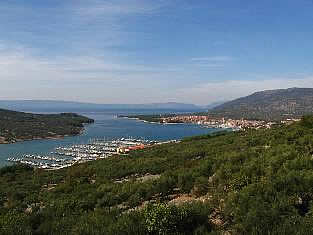
Cres Island
Many opt for the rental of apartments, the other camps in one of the camps, the third they like best accommodation at the hotel. It all starts with finding the destination Here is destination of specialy intact nature, sun and sea: Island Cres - Croatia
The island Cres lies in spacious environment of Kvarner bay. It is 66 km long and 2 km at the thightest part and 12 km at the widest part. Cres is a very hilly island and it is continutation of the mountainous crest Učke (Istra), which is at the south lower and lower and has a very oblongness appearance of the island. The highest picks are Gorice (648 m) and Sis (638 m). With island Lošinj, which is separated with only 11 m wide channel Kavuda, is connected with riseing bridge in town Osor. The island group of Cres and Lošinj, which is one of the biggest island group in the Adriatic's is composed by 36 islands, little islands and reefs. The coast is very beautiful and articled, her length is around 248 km.
Natural characteristic of Island Cres
The islands offers you many sandbanked beaches on the east part and soft, hidden bays at the south part of island Cres, which are just perfect for relaxing holidays. Nautics people will be very impressed by islands deep fiords on south-east and sheered cliffed coast on the north and east part of the island, this coast is exposed high bakarska-waves and senjske-north winds.
Submediterranean climate of northern parts of Cres is passing over, to south in the mediterranean climate. Summers are very warm and dry, with highest temperatures of the air in July, and the sea in August. The average year temperature is around 14,4 Celsius, and the average quantitiy of the rain is around 1.117 mm/m2. Prevailing winds are: very strong north winds in the west coast and south wind-jugo in the south part of the island. A very nice summer wind mistral-summer breeze blows on the east coasts.
The flora plays also a big part in the island of Cres. The north part is overgrown with forest of downy oak trees, beech trees, elm trees and chestnut trees. In the middle of the island are spreading out beautiful pastures and olive plantations, which in the south passing over to the area with makija-trees and pasture barren land. Cres is one of the richest islands in Adriatic's by its riches and variously of flora which contains more than 1300 vegetation species.
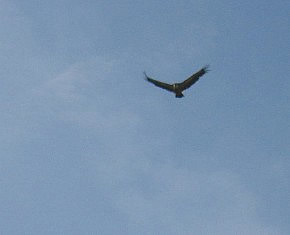 The animal world of the island Cres is not only interesting by its own diversity, but also because of a very special care, for protecting the island and its unique nature. Island is very rich with tiny and feathery vension. Among lots of species of birds is very known the White-headed Eagle, which is also peculiar symbol for north-east sheer coast of Cres island. For the protection of these noble bird of prey and for the whole natural and cultural-historical heritage of the island is taken care in the International eco-center Caput insulae with a place in a village Bela.
The animal world of the island Cres is not only interesting by its own diversity, but also because of a very special care, for protecting the island and its unique nature. Island is very rich with tiny and feathery vension. Among lots of species of birds is very known the White-headed Eagle, which is also peculiar symbol for north-east sheer coast of Cres island. For the protection of these noble bird of prey and for the whole natural and cultural-historical heritage of the island is taken care in the International eco-center Caput insulae with a place in a village Bela.
There in village Bela you can find also a point of departure for circular eco-path. This eco-path offers you great trips by the rest of the 100 km marked footpaths, where you can enjoy the nature. The island is also known because there are no poisonous snakes on the island. The Vransko-lake lies in the middle of the island and it is a hidrographic phenomenon. The lake is so called crypto-depression, the smooth surface of the lake is 13 m over the sea, and the bottom is around 60 m deep under the sea surface. These lake supplys other towns like Cres, Veli and Mali Lošinj with its drinking water, and in the lake we can also find a lot of different fishes like pikes, carps, tenches and even some eels. Lake is considered as source for drinking water, so the accession is strictly forbidden
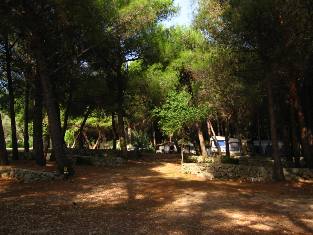 Sights and history of Island Cres
Sights and history of Island Cres
The remains of the city walls are: the fortress of the cylindrical shape in the north-east part of the town and the three city doors from 16.th century in the renaissance style: in the south we have smaller city doors Bragadina (build in 1581), and on north are doors Marcela (built in 1588) and there are also the remains of the doors of St. Mikula.
Otherwise island Cres was also in the middle ages surrounded with walls, which was the 16.th century renewed and rebuilt by Venetians. In the 19.th century the city walls were totaly in ruins. Very beautiful in Cres is also known parochial church Sv. Marije Snežne from the 15.th century, with later (18.th century) bell tower, this church has also some elements from gothic art and from the time of renaissance.
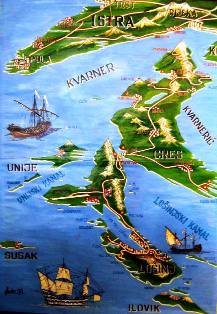
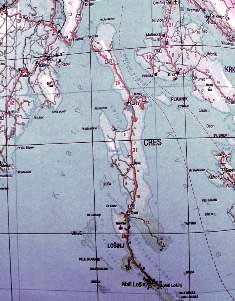 In the church parish they maintain the collections of paintings of the old masters, among those is the most important polyptych Sv. Sebastijan and other Saints, which was painted in the 15.th century by painter Alvise Vivarini. The church of Sv. Izidor (Sidarja), - the protector of the town, was built in the 12.th century, and it s a romanic church with a gothic front. This is the oldest church in the town and lies behind the palace of Petris. The city box (from the 16.th century) with its insult-pillar lies infront the main city doors, in the embrace of the medieval harbour – mandrača. In the gothic palace of the family Petris from the 15.th century are today rooms of the city museum, which maintains a rich collection of antique amphoras from the 2.th century b.c., which were found at the bottom of the sea near Pernat cape. In that museum you can also see a lapidary with inscriptions, decorations on the stone, medieval icones and also etnographical and numizmatical collection.
In the church parish they maintain the collections of paintings of the old masters, among those is the most important polyptych Sv. Sebastijan and other Saints, which was painted in the 15.th century by painter Alvise Vivarini. The church of Sv. Izidor (Sidarja), - the protector of the town, was built in the 12.th century, and it s a romanic church with a gothic front. This is the oldest church in the town and lies behind the palace of Petris. The city box (from the 16.th century) with its insult-pillar lies infront the main city doors, in the embrace of the medieval harbour – mandrača. In the gothic palace of the family Petris from the 15.th century are today rooms of the city museum, which maintains a rich collection of antique amphoras from the 2.th century b.c., which were found at the bottom of the sea near Pernat cape. In that museum you can also see a lapidary with inscriptions, decorations on the stone, medieval icones and also etnographical and numizmatical collection.
In the palace was in year 1952 born famous renaissance philosopher and writer Franjo Petrič (Petriš Franciscus Patritius). The palace of Petris is also known as Arsan, because of the arsenal which stayed on that place. The Franciscan monastery was built around year 1300, and beside the monastery we can also find a church of Sv. Francisco from the 14.th century. Its speciality is a double atrium, the outside, the renaissance, with a tombs from famous Cres's-familys, and interior atrium wich is older, and in the middle lies a fountain with chiseled Cres's city armorial from the 14.th century. In the monastery is also a museum. Very intersting to see is also a Benedictine monastery for women, from 15.th century. In the monastery church you can see the gold altar with intarsia, on which is formed the »Lady Day« adn the altar with the Feast of the Assumptium from the 17.th century. Among this you can also admire in the city a lot of other little gothic , late-gothic and renaissance churches like (Sv. Marko, Sv. Jakob, Sv. Kajetan, Sv. Jurij, Sv. Barbara, Sv Nikolaj, Sv. Duha, Sv. Marija Magdalena, Sv. Križa) and other romanic churches like the church of Sv. Ivana. Amond other renaissance palaces of Cres's patricians are very notable palaces of Rodinis and Moise.
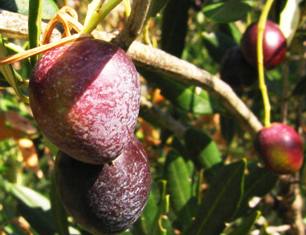 Gastronomy of Cres Island
Gastronomy of Cres Island
The most famous and known island speciality is defenitly Cres's lamb, which ows its remarkable taste from traditional sheep-breeding in the free, salty and vegetable rich pasturage. The native people are preparing lamb by old and traditional recipes, which are offering one of the highest gastronomics pleasures. And for appetizer we advice you to taste home-made sheep cheese, olives and smoked ham. Fanciers of sea food can enjoying in rich sorts of fresh fishes, lobsters and other sorts of crabs and mussels, which are spiced with great olive oil. Sea food is offered and prepared in many different ways. Among the traditional and home made dishes are on the menu also alot of other island restaurants or »konob«, and they are offering you also a classical international kitchen. And for the perfect gastronomic pleasure are very important good vines. In island Cres are very recomendable white or red-black vines.

